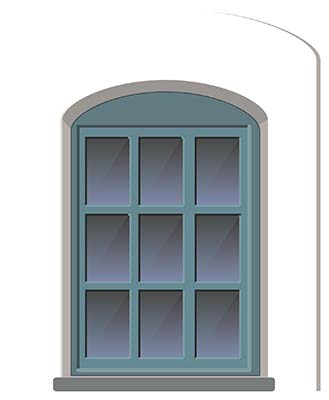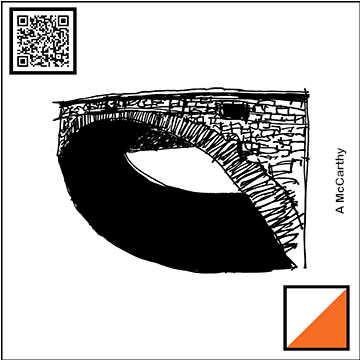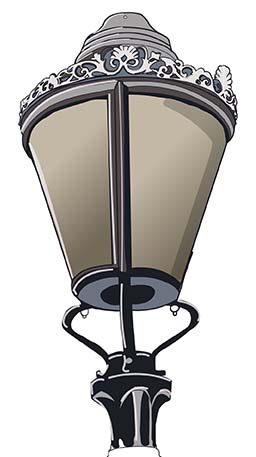Checkpoint 9: Clarke’s Bridge
Checkpoint 9: Clarke’s Bridge
Illustration of architectural feature close to the tile:


| This illustration marks our ninth checkpoint and was drawn by local artist - Anne McCarthy. It is a depiction of Clarke's Bridge. |
Checkpoint 9: Clarke’s Bridge
Welcome to Stop 9, over the rushing River Lee at Clarke’s Bridge!
Wandesford Quay
Like much of Cork’s waterfront, Wandesford Quay play an important role in the industrial life of the city. Some traces of that past still survive in the form of buildings like the 1840 warehouse that today houses artists, printmakers and a gallery, but in the 19th century was used as a grain store. The top floor retains its hoist canopy, which was used to lift heavy objects up and down from the quayside.
The Bridge
The Bridge was first constructed in 1766 to cross the south channel of the River Lee. It was designed by Samuel Hobbs, and when it was first built, it was said to have had the longest span of any bridge in Ireland. The bridge took its name from Clarke’s Marsh, which the bridge connected with Wandesford Quay. Look out for the set-back areas in the red sandstone above the bridges arches—these suggest that it may once have been partially clad in dressed stone to give the bridge a grand appearance.
Feature Focus: Ready for The Emergency
During the Second World War Ireland entered what was called The Emergency. While the country remained neutral, military and police activity was heightened, and the nation made preparations to in the face of an unknown future. As a strategic crossing point over the Lee, Clark’s Bridge was one of the sites that received special attention. In order to assist any men assigned to guard it, a special lockbox was inserted into the fabric of the bridge so they could store supplies and equipment. It still survives, keep an eye out for it on both the interior and exterior of the bridge—maybe you can find the key!
Looking Around: Spot the Arched Carriageway
One of the buildings on the south side of the bridge is a terraced house that was first built around 1840. Although it has been modified over the years, clues as to some of its origins features are still visible. See can you spot the ghostly traces of the arched carriageway which has been blocked up, and now contains a window. In the 19th century, this would have been how the residents came and went with their horse and carriage.
| Clue: Follow the river, and you will find the next tile at an international quay. |




